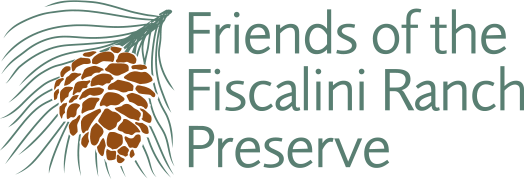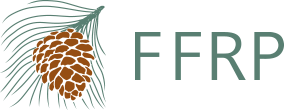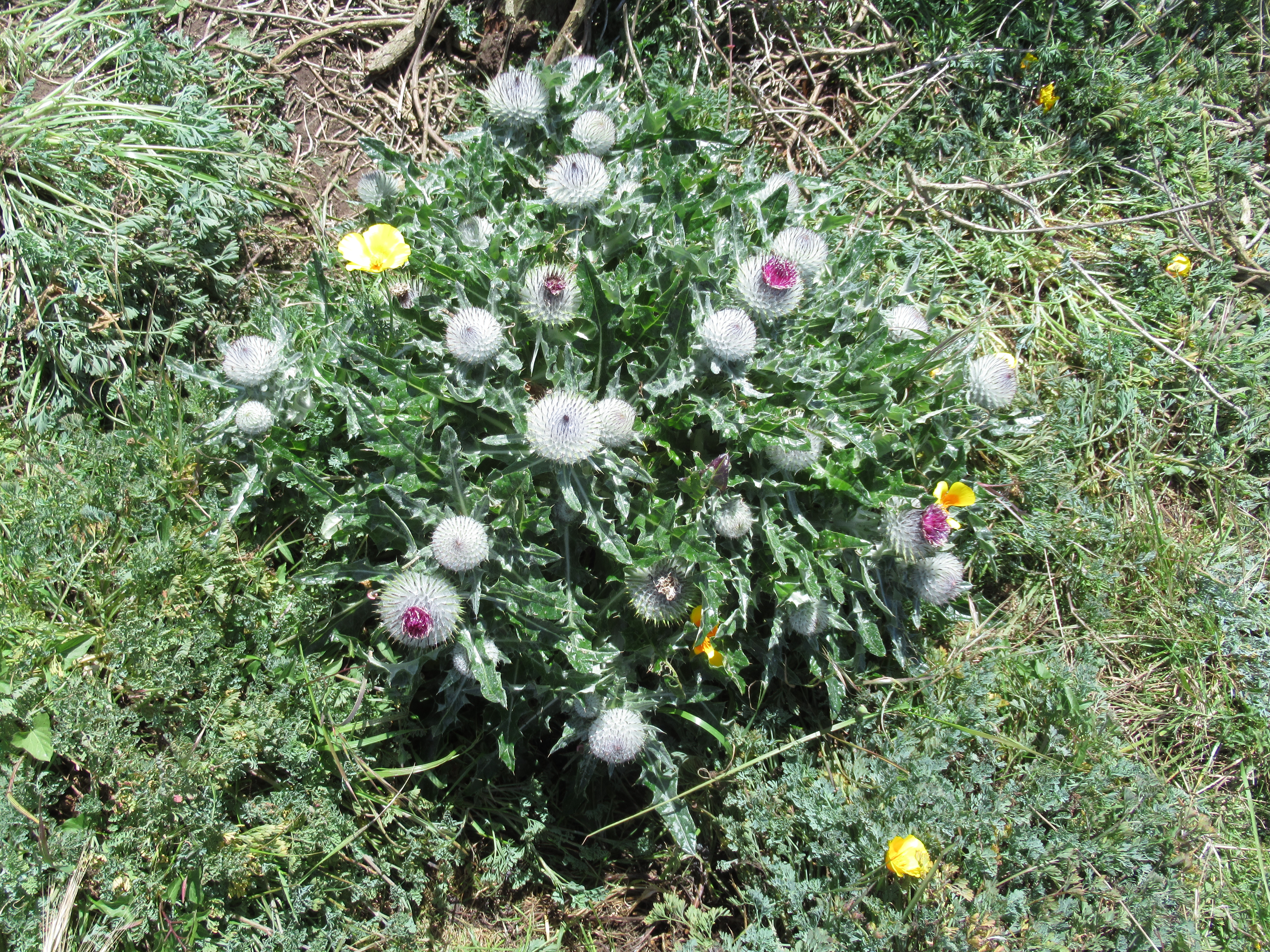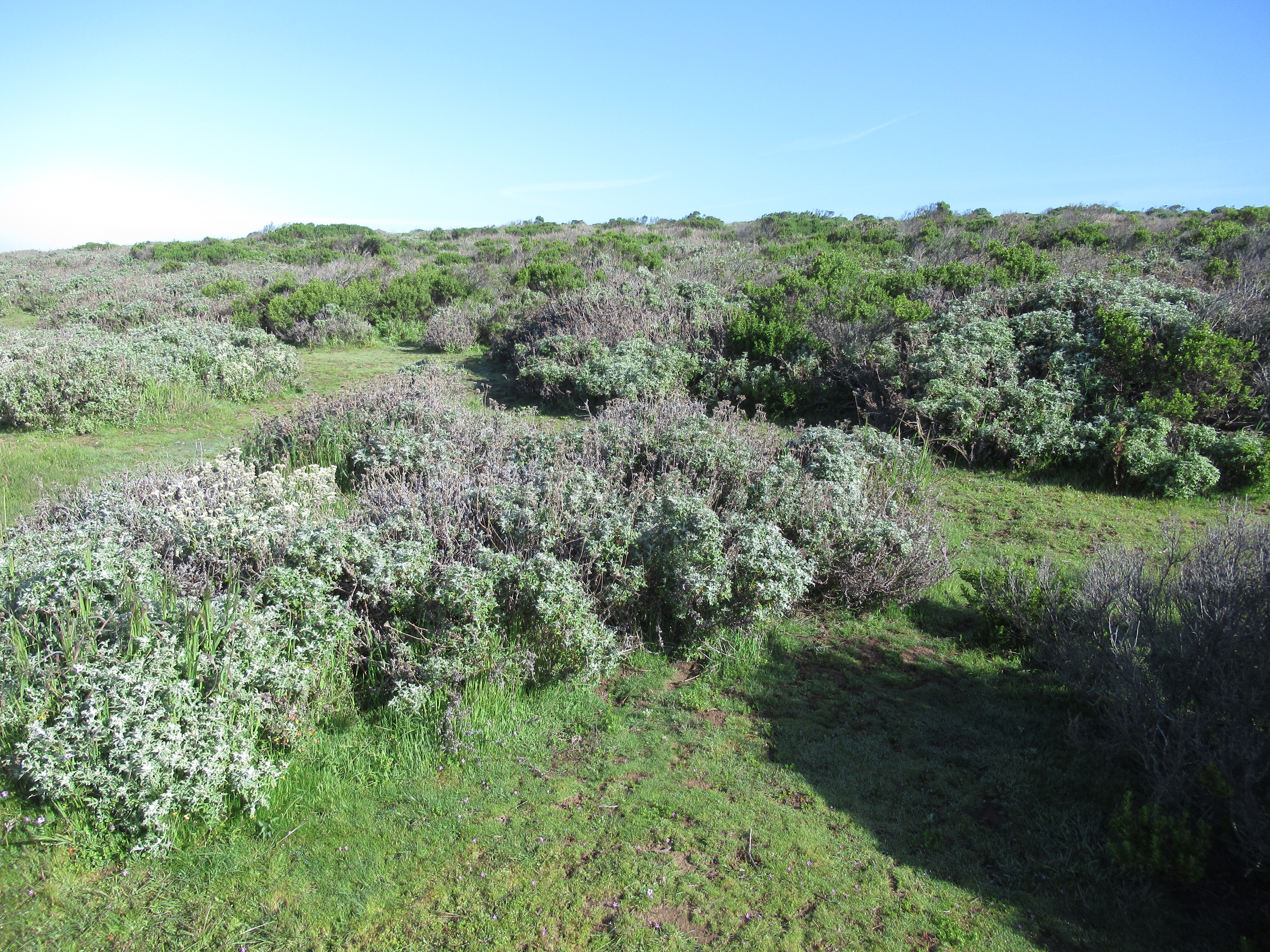2024.06.19 | What Is the Difference Between This or That?
By MARVIN JOSEPHSON
With Cambria’s winter rains lasting into a spring punctuated with occasional periods of sun, invasive weeds on the Fiscalini Ranch Preserve have been thriving. Their attempts to spread and prosper are being challenged by a small, but dedicated group of FFRP volunteers who meet every Wednesday from 9 to 11 a.m. on the Ranch to engage in war on these invaders.
It has been a constant battle since the preserve was acquired in the year 2000, but the fight this year is especially challenging. Why do battle with weeds? Is it a worthwhile cause? In a legal context, control and elimination of invasives is contained within the Conservation Easement, which states: “Natural Resource Values of the Property be preserved.” But managing invasive weeds also makes ecological sense.
For residents and visitors who frequent the Fiscalini Ranch trails, the surrounding natural foliage may look fairly good and healthy, and this is often true. However, this is the result of removing invasive weeds every week from February to September. The usual invasive plant targets of the Wednesday weeder volunteers are mustard, radish, bull thistle, sow thistle, Italian thistle, milk thistle, poisonous hemlock, and French broom. There are others, of course, but the volunteers focus on the named plants because they do the most damage to native plants. Removal of the invasives is done while protecting and leaving the rare native compact cobwebby thistle, a plant that only grows in areas of the coastline near the Bluff Trail. The picture above is a good one for learning to identify this native plant.
The weekly removal of invasive weeds is a steady process, and not one that is readily apparent. If it were not done, the weeds would take over and choke out native plants. The side-by-side pictures below show (on the left) a lupine struggling to survive amongst a bull thistle and mustard. On the right, that same lupine has been freed of these invasives. It now has a chance to flourish.
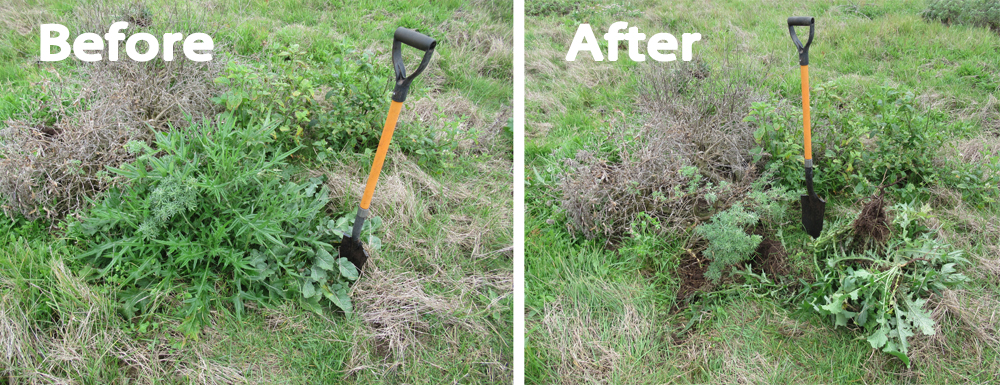
Regarding invasive mustard and radish plants, the third picture below is of a familiar field on the north side of Highway 1, just south of Cambria Drive before the lot was cleared for fire protection. This illustrates what happens if invasives are allowed to go unchecked. Now compare this to the bottom picture of the Fiscalini Ranch near the Bluff Trail and the Arch Bench. It shows a healthy growth of native plants, with very few invasives. This area could easily look like the invasive growth along Highway 1, but it does not because of the continued removal of weeds, thanks to dedicated volunteers.
Is it possible to win this “war of the weeds”? Not completely, but with more volunteers who like to get some exercise in a gorgeous setting while having the unique satisfaction of digging up invasives that harm native plants, these plant enemies of Fiscalini Ranch Preserve can be kept at bay. Anyone can help. It is a matter of “This versus That.” Please visit the Friends of the Fiscalini Ranch Preserve website at: fiscaliniranchpreserve.org for more information on becoming a volunteer.
Article first published in https://cambriaca.org/
